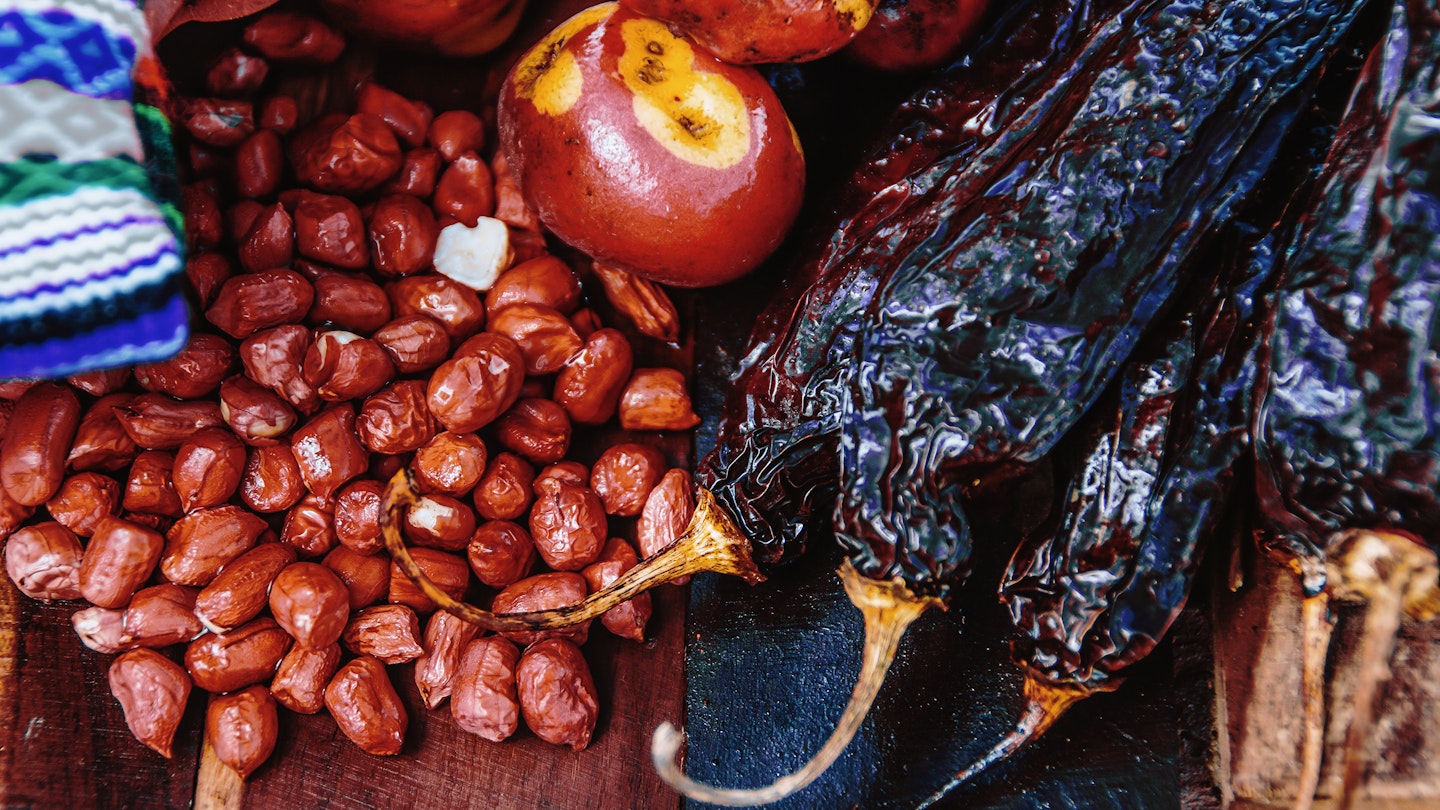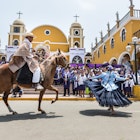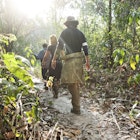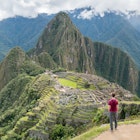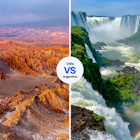2013 was a pivotal point for Peru’s arrival on the world’s culinary stage. It was in this year that Peruvian food grabbed its first Michelin star, courtesy of London’s Lima restaurant. It was this year too that Lima-based restaurant Astrid y Gastón shot to prominence with numero uno position in the inaugural Latin America’s 50 Best Restaurants awards.
The buzz about this cuisine, rooted in its diverse use of tubers and peaking in acute notes of citrus and ají chillies, has not died down since: Latin America’s top two restaurants in the 2017 edition of the awards were Peruvian, too.
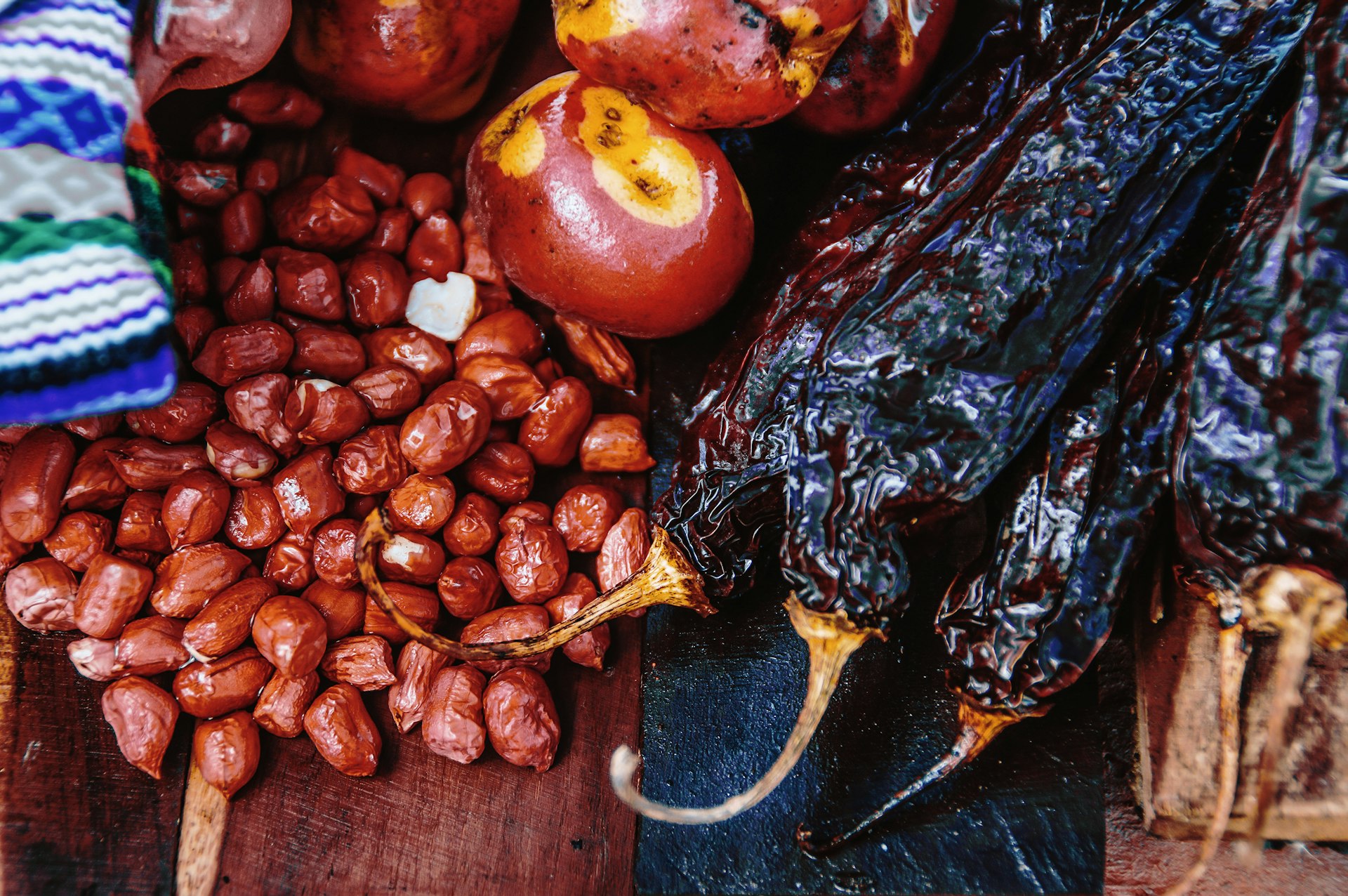
But whilst the world tends to myopically view Peruvian food as a cuisine of the moment with its beating heart in the gastronomically blessed capital of Lima, the reality is rather different. The nation practices some of the most ancient cooking methodologies on the planet. And Lima serves as a melting pot for Peru’s many wildly contrasting regional cuisines. If becoming fully acquainted with Peru’s gastronomy were likened to a journey, Lima would be the ambassadorial handshake and first few steps.
Lima’s luxuries
Peru’s capital has spearheaded the country’s drive towards international culinary renown. And in swanky neighbourhoods like San Isidro and Miraflores you’ll find the suavely experimental restaurants that have captured food critics’ attention of late.
Astrid y Gastón itself is the brainchild of Peru’s most globally recognisable chef, Gastón Acurio. Acurio can lay claim to opening the world’s eyes to his country’s cuisine, having brought experience of working in some of Europe’s best kitchens back to his native Lima. He was a driving force, too, behind promoting Peru’s novoandina (new Andean) cooking style, which draws upon the ancient cuisine originating in Peru’s highlands and reinterprets it in more modern ways: creating quirky hybrids like quinotto (quinoa risotto). Astrid y Gastón, now housed in a palatial hacienda in San Isidro, is not only Acurio’s flagship restaurant, but also a history lesson on how Peruvian food hit the big time. Its menu for 2017 pays homage to the Lima region’s culinary traditions, with a focus on the sublime seafood the area is famed for.
Virgilio Martinez’s Miraflores restaurant Central has also been scooping major culinary awards for a while and is the best address at which to awaken your appetite to Peru’s multifarious flavours. Diners here are ushered on a nationwide culinary adventure with each course representing a specific elevation and ecosystem through rarely championed ingredients such as sea urchin (coast), tree tomato (mountains) and the guanábana or soursop (rainforest).

Ceviche: a countrywide obsession
There is a veritable constellation of emerging stars in the city that is arguably now Latin America’s culinary hub. But the centrifugal force of Lima’s cuisine is not a celebrity chef, but ceviche.
Wolfed down as the antidote to sweltering afternoons the length and breadth of Peru, the cool lime-marinated fish is best when cobbled together with just-landed catch in the country’s coastal communities, and never better showcased than in the capital. Cebicherías (ceviche restaurants) can be fancy, such as La Mar in Miraflores, but are more often humble back-street joints where Lima residents mingle over lunches that can continue for hours.
There is a reason ceviche is Peru’s national dish and why, despite achieving global renown, Peruvian ceviche is still seldom exported with authenticity. Take it outside the country and it cannot but lose some of its meaning.
Ceviche is the ultimate Peruvian fusion food: a make-up of the indigenous, the Hispanic and even a little bit of the Japanese that reflect Peru’s demographic to this day. Just off Peru’s coast, the cold Humboldt Current collides with tropical waters to produce a remarkable diversity of seafood – and it was this that Peru’s pre-Columbian peoples readily harvested as a dietary mainstay. Origin stories vary but the Moche people, inhabiting Peru’s coast almost two millennia ago, were perhaps ceviche’s forefathers. The Inca, whose armies needed sustenance on long trips through Peru’s interior, also preserved fish for future consumption but used chicha, an Andean fermented corn beverage, as the preserving marinade. Conquistador-introduced lime later replaced the chicha, and the Spanish also brought over the coriander and red onion that colour the dish. But the sweet potato and corn that ceviche is traditionally served alongside have been cultivated in Peru since time immemorial, as have the ají chillies that give ceviche its fieriness. And the Japanese diaspora to Peru from the 19th century shook up ceviche marinating times and methods, and gave rise to Nikkei, an amalgamation of Japanese and Peruvian food that is taking Lima by storm at the moment.
One important part of the ceviche-eating process in Peru is the pouring of the leche de tigre, the zinging citrus juices in which the ceviche is ‘cooked’, into a glass to drink along with the meal: the ultimate toast to this most distinctive of Peruvian dishes.
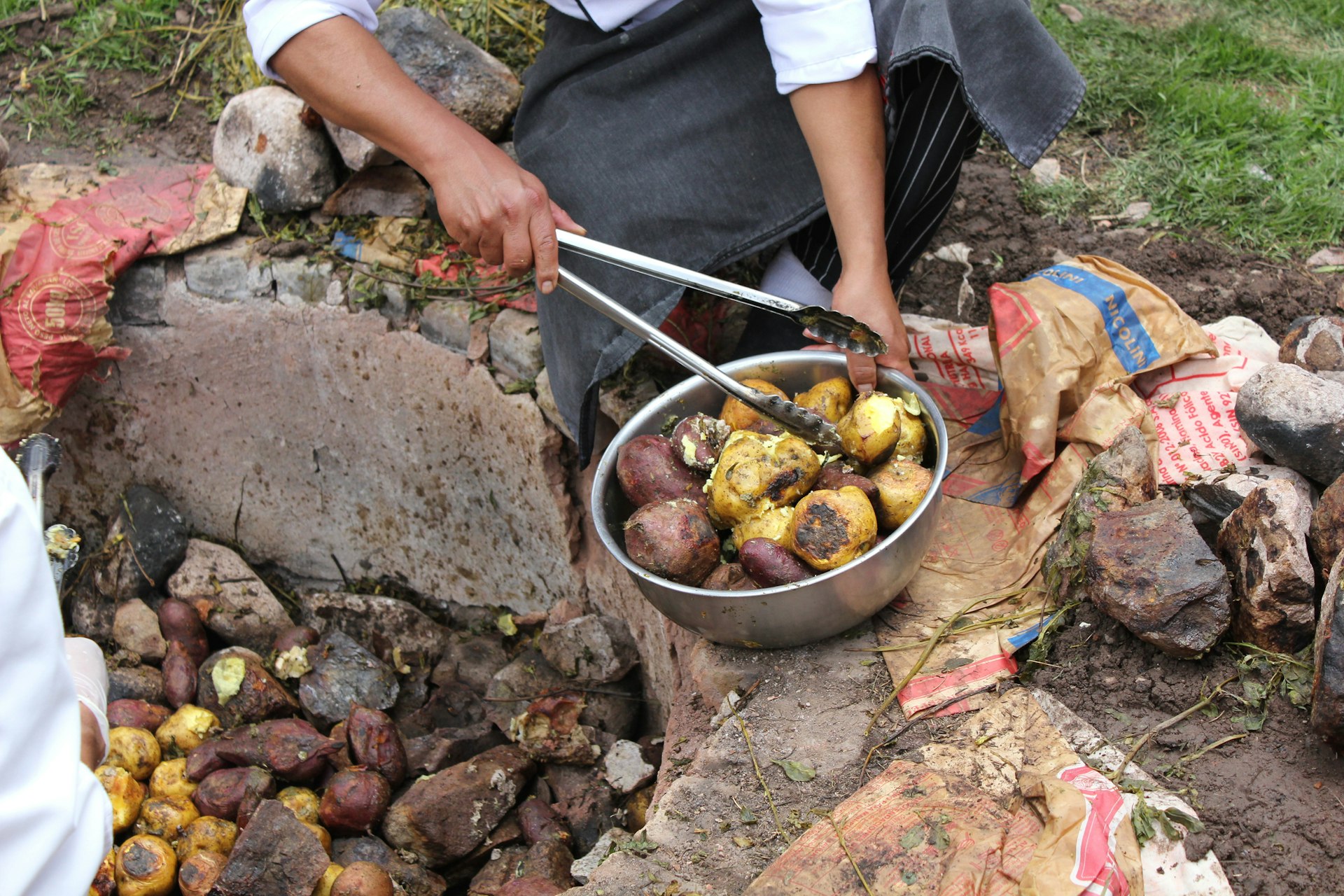
Up to the Andes
A typical onward ticket on the culinary journey might whisk you from Lima and the arid coast up into the Andes mountains to the east. Over 3000m loftier, and a good deal cooler, on the highland plateau is where Peruvian food bares its ancient soul.
Just as the Inca armies once established control of these craggy uplands, so the indigenous roots in Andean cooking remain strong. Here, some 8000 years ago, was where the potato first developed. Potatoes along with corn comprised the two key energy sources of the Inca Empire, and the foodstuffs’ popularity has not waned since. Peru can, for example, boast several hundred varieties of potato still used in cooking today, and a hallmark of highland cuisine is pachamanca, an Inca cooking method whereby meat and potatoes marinated in spices are cooked in hot rocks on the ground. Besides the standard chicken, pork or lamb, the other main meat of the mountains is cuy, or guinea pig. Its importance to diet hereabouts is underlined by its appearance on a painting of the Last Supper in a cathedral in Cuzco as the dish of Jesus and the Disciples.

To slurp away the regularly bitter Andean weather, piping-hot soups and stews are particularly popular. Meat, tubers like yucca or sweet potato and grains like quinoa bubble together in cooking pots as the de facto hunger-buster across this region. The Andes is also the hotbed of lomo saltado, a stir-fry of marinated steak strips, tomatoes, onions and French fries served over rice.
With so many valleys here eluding contact with the rest of Peru for so long thanks to their somewhat extreme topography, regional variety in Andean cooking is extremely pronounced. Arequipa is noteworthy for its chupe de camarones (shrimp stew), Ayacucho for its puca picante (beef and potato stew wallowing in spicy red peanut-and-pepper sauce) and Huancayo for papas a la huancaína (potatoes ladled in creamy cheese sauce, eggs and olives).
Often the best way to eat here is from the street-side stalls at the region’s myriad festivals.
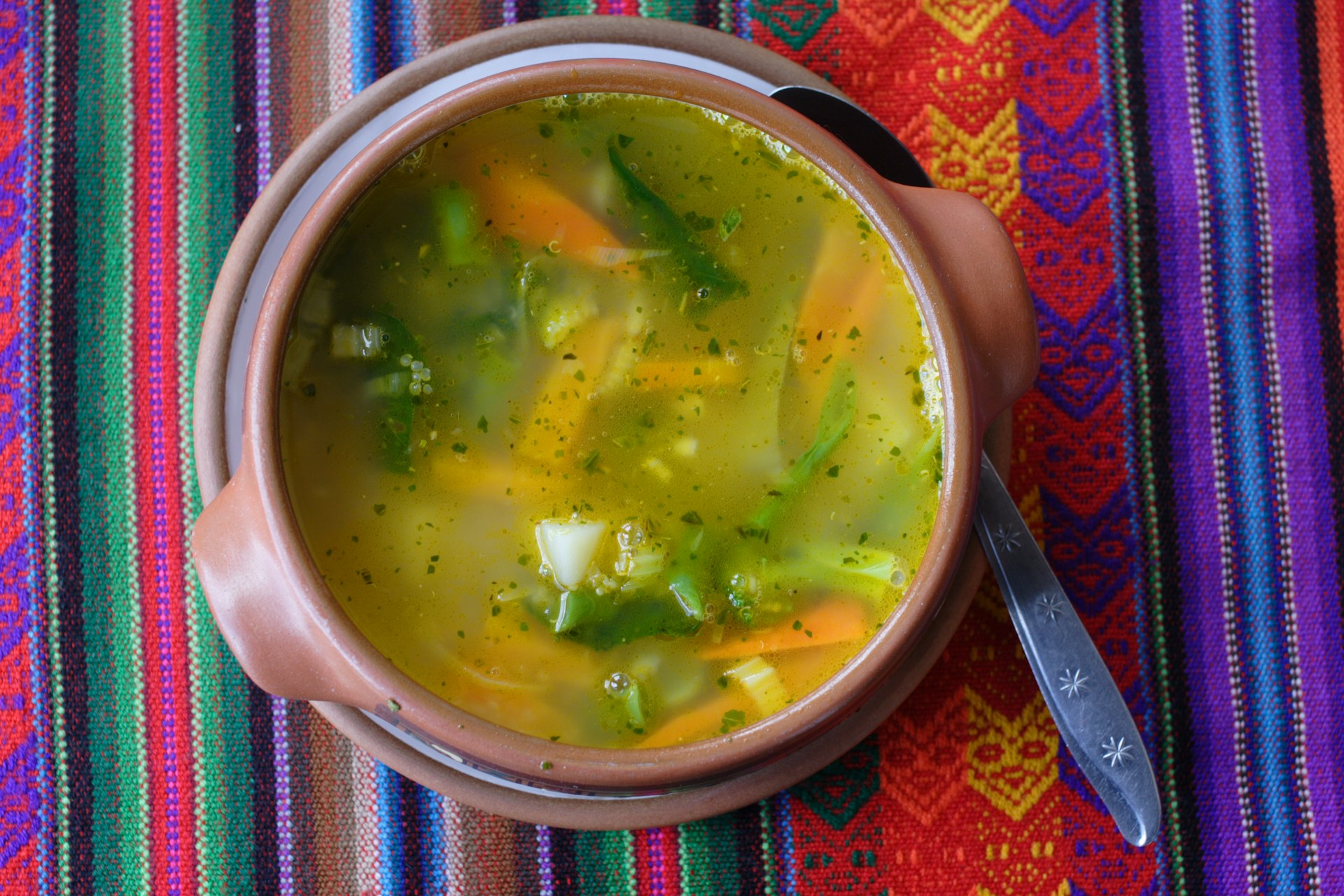
Specialities of the Selva
As you descend east from the Andes to the Amazon rainforest from the selva alta (high jungle, including cloud forest) down to the selva baja (the low jungle further east), an array of food as bizarre and colourful as the surroundings starts to feature at the stalls and restaurants. Much of it has never been championed internationally because it relies on fruits and vegetables that simply do not grow anywhere else, or on ingredients that sensitive foreign palates would likely reject.
The tastiest snacks to pick up are juanes, rice steamed with meat or fish in a wrap-around jungle leaf, and perfectly portable for long river trips. Flavoursome river fish like tilapia or paiche, making a comeback after reintroduction programmes, occur more frequently on menus out here. Another distinctive main meal is parrilladas de la selva: barbecued rainforest meats marinated in Brazil nut sauce.
The Peruvian Amazon’s standout culinary Mecca is Belén Mercado in Iquitos. At this traditional market, all manner of jungle titbits from exotic fruit juices through to fried leafcutter ants await to be sampled – should you have the stomach for it.
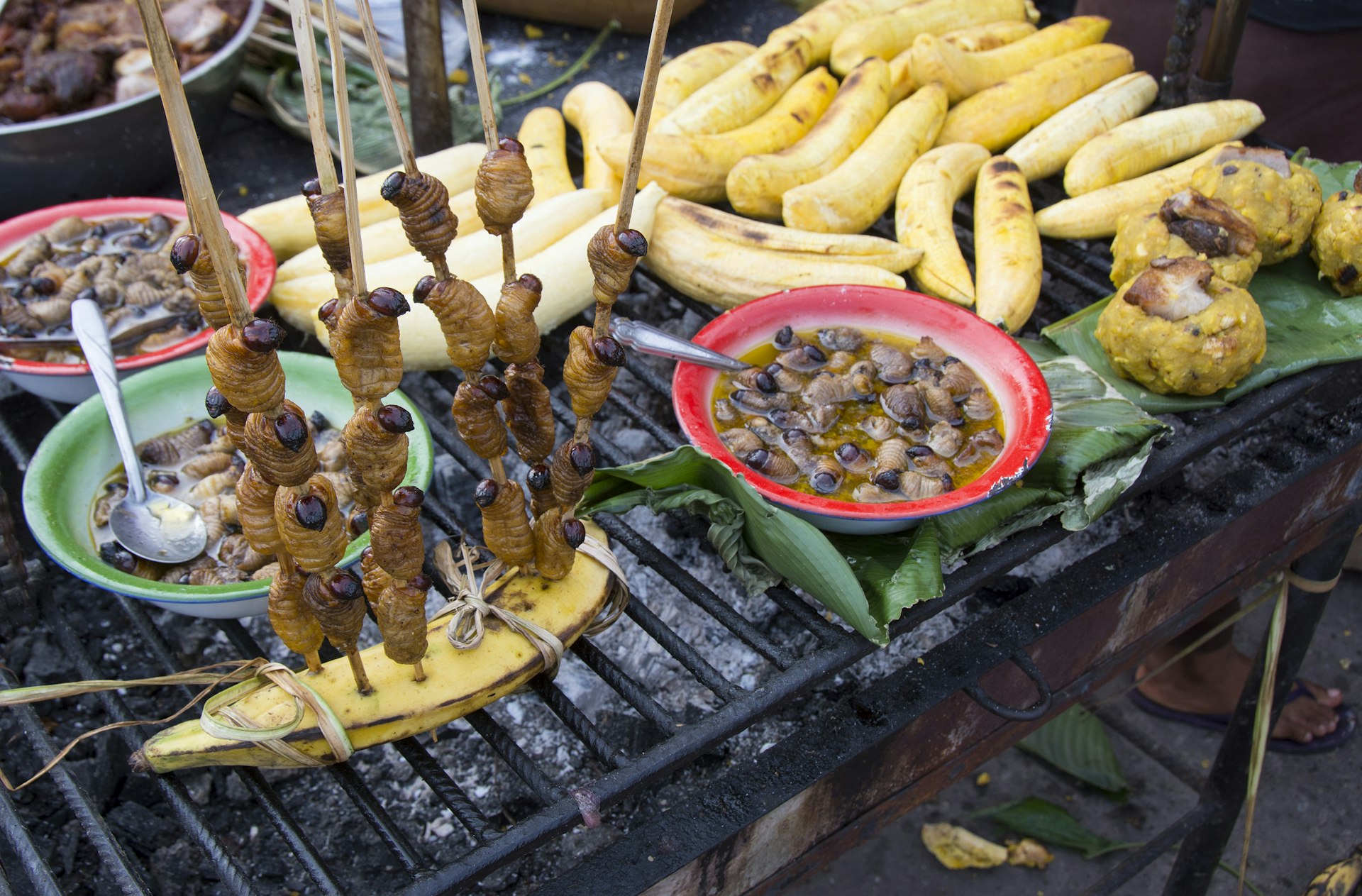
Participatory Peruvian food experiences
If your appetite for Peruvian food has been whetted enough to experience it beyond the restaurant table, then cities like Lima and Cuzco have an array of culinary festivals and cookery classes on offer. Mistura is Latin America’s largest foodie event, taking place in Lima in October and November and featuring a farmers market and celebrity chef appearances. For culinary tours, as well as various tastings and cooking classes with an Andean theme, there is Marcelo Batata Cooking Class in Cuzco.

